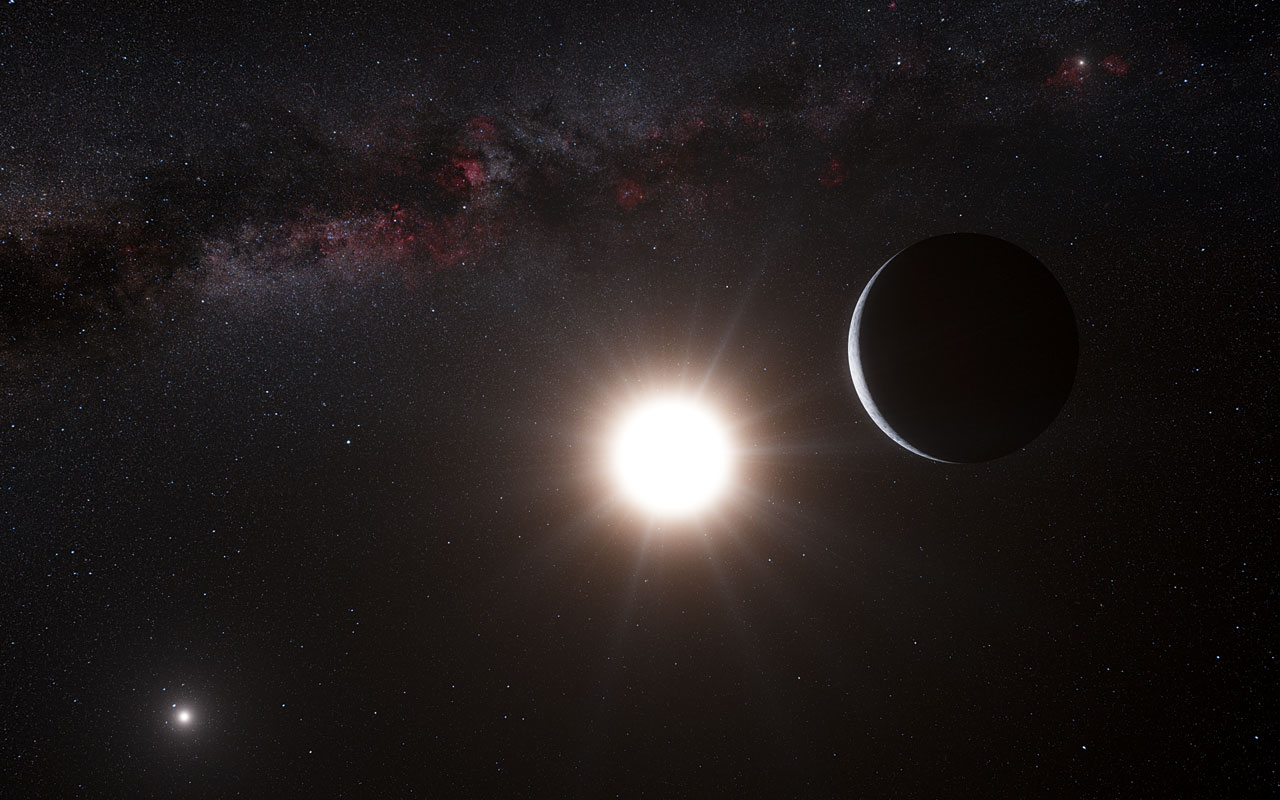Please note: Osher Rainforest will be closed for maintenance Jan. 14–16.
Science News
Exoplanets Everywhere
October 17, 2012

Mister Rogers would be thrilled with the news that broke yesterday! The childrens’ program host who touted exploring your own neighborhood would have loved the headline from Nature News, “The exoplanet next door.”
Phil Plait seemed to appreciate the news just as much. His Discover headline read in all-caps, “ALPHA CENTAURI HAS A PLANET!”
Let’s analyze all of this excitement…
Yesterday, astronomers announced they discovered an Earth-sized planet orbiting Alpha Centauri. The finding is also published in Nature today.
Alpha Centauri lies only 4.3 light-years away—closer than any other star system. And it’s not one star but three—two binary stars similar to the Sun orbiting close to each other, called Alpha Centauri A and B, plus a more distant and faint red companion known as Proxima Centauri. Since the nineteenth century, astronomers have speculated about planets orbiting these bodies, the closest possible abodes for life beyond the Solar System, but searches of increasing precision had revealed nothing. Until now.
“Our observations extended over more than four years using the HARPS instrument and have revealed a tiny, but real, signal from a planet orbiting Alpha Centauri B every 3.2 days,” says Xavier Dumusque, lead author of the paper. “It’s an extraordinary discovery and it has pushed our technique to the limit!”
A period of 3.2 days means that this new planet orbits extremely close to its parent star, “roasting at perhaps 2,200 degrees Fahrenheit with a surface likely composed of molten lava,” writes Adam Mann in Wired. Not exactly a hospitable neighbor! (Sorry, Mr. Rogers.)
This news comes right on the heels of another exoplanet discovery. On Monday, our friends at Zooniverse announced the first ever confirmed exoplanet discovered by the citizen scientists at Planet Hunters—a gas giant dubbed “PH1” with a radius about 6.2 times that of Earth, making it a bit bigger than Neptune. PH1 resides in a four-star system—twin suns that in turn are orbited by a second distant pair of stars.
These discoveries provide further evidence that, with the number of eyeballs looking for exoplanets (professional astronomers and citizen scientists alike), an Earth-like exoplanet can’t be far off. Again from the Bad Astronomer:
…we’re zeroing in on Terra Nova, folks, and statistically speaking there should be millions of them in the galaxy. It’s only a matter of time before we find the first one.
Image: ESO/L. Calçada